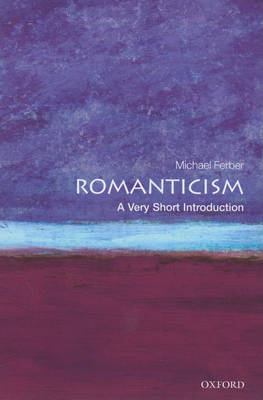
Door een staking bij bpost kan je online bestelling op dit moment iets langer onderweg zijn dan voorzien. Dringend iets nodig? Onze winkels ontvangen jou met open armen!
- Afhalen na 1 uur in een winkel met voorraad
- Gratis thuislevering in België vanaf € 30
- Ruim aanbod met 7 miljoen producten
Door een staking bij bpost kan je online bestelling op dit moment iets langer onderweg zijn dan voorzien. Dringend iets nodig? Onze winkels ontvangen jou met open armen!
- Afhalen na 1 uur in een winkel met voorraad
- Gratis thuislevering in België vanaf € 30
- Ruim aanbod met 7 miljoen producten
Zoeken
€ 13,95
+ 27 punten
Omschrijving
In this Very Short Introduction, Michael Ferber explores Romanticism during the period of its incubation, birth, and growth, covering the years roughly from 1760 to 1860. This is the only introduction to Romanticism that incorporates not only the English but the Continental movements, and not only literature but music, art, religion, and philosophy. Balancing lively details with intriguing topics, it sheds light on such subjects as the "Sensibility" movement, which preceded Romanticism; the rising prestige of the poet as inspired prophet; the suffering and neglect of the poet; the rather different figure of the "poetess"; Romanticism as a religious trend; Romantic philosophy and science; and Romantic responses to the French Revolution, the Orient, gypsies, and the condition of women. Ferber offers a definition and several general propositions about this very diverse movement, as well as a discussion of the word "Romantic" and where it came from. Finally, some two hundred authors or artists are cited or quoted, many at length, including Blake, Wordsworth, Coleridge, Byron, Shelley, Keats, Emerson, Hugo, Goethe, Pushkin, Beethoven, Berlioz, Chopin, and Delacroix.
Specificaties
Betrokkenen
- Auteur(s):
- Uitgeverij:
Inhoud
- Aantal bladzijden:
- 176
- Taal:
- Engels
- Reeks:
Eigenschappen
- Productcode (EAN):
- 9780199568918
- Verschijningsdatum:
- 17/10/2010
- Uitvoering:
- Paperback
- Formaat:
- Trade paperback (VS)
- Afmetingen:
- 115 mm x 173 mm
- Gewicht:
- 136 g

Alleen bij Standaard Boekhandel
+ 27 punten op je klantenkaart van Standaard Boekhandel
Beoordelingen
We publiceren alleen reviews die voldoen aan de voorwaarden voor reviews. Bekijk onze voorwaarden voor reviews.











